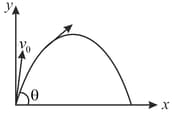Embibe Experts Solutions for Chapter: Kinematics, Exercise 3: Exercise - 3
Embibe Experts Physics Solutions for Exercise - Embibe Experts Solutions for Chapter: Kinematics, Exercise 3: Exercise - 3
Attempt the free practice questions on Chapter 4: Kinematics, Exercise 3: Exercise - 3 with hints and solutions to strengthen your understanding. Alpha Question Bank for Engineering: Physics solutions are prepared by Experienced Embibe Experts.
Questions from Embibe Experts Solutions for Chapter: Kinematics, Exercise 3: Exercise - 3 with Hints & Solutions
A particle has an initial velocity and an acceleration of . Its speed after is,
A particle is moving with velocity where is a constant. The general equation for its path is
A water fountain on the ground sprinkles water all around it. If the speed of the water coming out of the fountain is , the total area around the fountain that gets wet is
A boy threw a stone up to a maximum height of . The maximum horizontal distance that the boy can throw the stone will be,
A projectile is given an initial velocity of where is along the ground and is along the vertical. If the equation of its trajectory is
A particle is moving with speed along the positive -axis. Calculate the speed of the particle at time (assume that the particle is at the origin at ).
Consider a body of mass at rest at the origin at time A force is applied on the body, where The torque acting on the body about the origin at time is . Which of the following statements is (are) true?
Small particle of mass is projected at an angle with the axis with an initial velocity in the plane as shown in the figure. At a time the angular momentum of the particle is

where and are unit vectors along and axis respectively.
